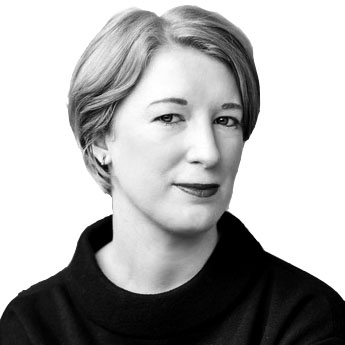In the 1920s, the French Riviera was a glamorous secret: a haven for Americans escaping Prohibition and a particularly Anglophone summer idyll (the French went in the winter). In Chanel’s Riviera, Anne de Courcy’s focus is on the turbulent years that followed, through the war and occupation and on to a recovery that saw the region transformed into a mass tourist destination. It is a fascinating period, but presents a problem of tone. Even if one is predisposed to care about the antics of the very privileged in times of plenty (and readers of de Courcy, whose books frequently document the lives of aristocrats, may be assumed to care more than most), it becomes increasingly difficult to sympathize with the characters’ cushioned losses as the political climate darkens.
Coco Chanel is among those privileged characters, but her centrality isn’t quite what the title suggests: she’s in Paris much of the time, and “her” Riviera is closely centered on the house Chanel built in 1930 in Roquebrune and the intimate circle with which she shared it. What the story does underscore is Chanel’s power and prominence at this point of her career as an icon of the globally dominant French fashion industry, and how astutely she wielded that power to protect herself. It’s an instinct de Courcy traces back to her childhood, confined to a strict convent orphanage after her mother’s death. After the invention of Chanel No. 5 perfume, her wealth and independence were assured, but she continued to work tirelessly, and always wanted a man about.
Love Interest No. 5+
As the book begins, Chanel’s affair with the obscenely rich Duke of Westminster is ending under the twin pressures of his infidelities and her inability to get pregnant in her 40s. Her subsequent dalliances with men—who are usually on marriage No. 3 and mistress No. who’s counting?—come across as loveless, bloodless affairs, despite their surface passions. In later life Chanel romanticized the British polo player and playboy Arthur “Boy” Capel, who was killed in a car accident in 1919, as her great lost love. Yet even that relationship was transactional and pragmatic: Capel subsidized Chanel’s start in the fashion business and was habitually unfaithful. In the Riviera years, Chanel’s abusive relationship with the Basque designer and virulent anti-Semite Paul Iribe—euphemistically described as “stormy”—also ended with his sudden death, and during the war she became involved with a German spy. All these entanglements were perfectly compatible with the mores and morals of Côte d’Azur society, where the only real crime was not having money.

De Courcy has a knack for stringing together juicy stories about this wider society, never dwelling too long to worry about consequences. There are glimpses of Jean Cocteau smoking opium in a hotel in Villefranche, of Winston Churchill running out on his gambling debts in Monte Carlo (which he repaid after the war), and of Marlene Dietrich in Antibes juggling her lovers Joseph Kennedy, the writer Erich Maria Remarque, and the lesbian oil heiress Marion “Joe” Carstairs. There are cameos from writers—Colette, D. H. Lawrence, H. G. Wells, Aldous Huxley—and the kinds of stories tailor-made to be passed along as lunch-party anecdotes: did you hear the one about Somerset Maugham smuggling avocado plants to Cap Ferrat from California, and Cyril Connolly trying to make off with one of the rare fruits in his luggage?
Chanel’s romantic entanglements were perfectly compatible with Côte d’Azur society, where the only real crime was not having money.
As time goes on, however, the juxtaposition of frivolity and geopolitics becomes more jarring. While the Prince of Wales is secretly courting Wallis Simpson, wooing her with jewels so big everyone thought they were fake, Jewish intellectuals and critics of the Nazi regime begin fleeing to the Riviera, turning the village of Sanary into “Weimar-on-Sea.” We’re told that the wealthy expatriate community mostly ignored the wider political situation, yet it’s clear that their silence often signaled tacit approval. As Jewish identity became a matter of life and death, Chanel enthusiastically espoused anti-Semitic views, which de Courcy minimizes with familiar excuses—it was just words, it was the time, “she had plenty of Jewish friends and clients.” There comes a certain satisfaction upon learning that the architect of Chanel’s seaside villa used it without her knowledge to help several Jews escape to Resistance strongholds.
Despite being challenged after the war to answer for her “horizontal collaboration” with her German lover, Chanel’s fame, wealth, and legacy protected her (offering all American G.I.’s in Paris a free bottle of Chanel No. 5 certainly helped). But de Courcy’s book, even inadvertently, is a reminder that “glamour” is a superficial spell, hiding ugly truths that deserve our scrutiny.
Joanna Scutts is the author of The Extra Woman


